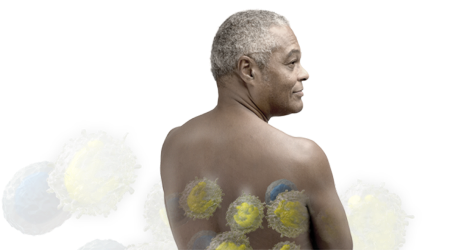What is Sézary Syndrome (SS)?
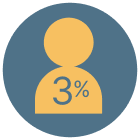
SS is a serious type of CTCL and affects about 3% of people with CTCL
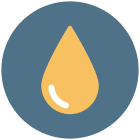
Everyone diagnosed with SS has cancer cells in their blood. This is a key difference from MF, where it’s possible for people to have disease that affects only the skin

SS is more common in people older than 50 years, and slightly more common in men
What are some skin symptoms of Sézary Syndrome?
Patients will usually experience symptoms of Sézary Syndrome on the skin.
These symptoms may include:
- Red, itchy rash that looks like sunburn, called erythroderma (covering at least 80% of the body)
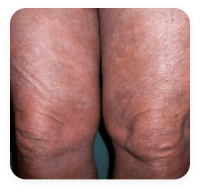
Exfoliative
erythroderma in SS*
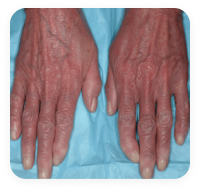
Waxy erythroderma
in SS*
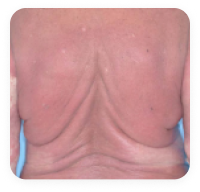
SS erythroderma*
“Imagine thousands of mosquito bites all over your body
bothering you 24 hours a day.” — Isa, a patient ambassador diagnosed with Sézary Syndrome
Does Sézary Syndrome affect more than the skin?
Sézary Syndrome affects both the skin and the blood
- You may notice enlarged lymph nodes, even if the cancer has not spread to them
- In some cases, people experience changes in their nails, hair, and eyelids
When or if your CTCL will change is unpredictable. It’s important to stay connected with your care team to help ensure appropriate monitoring of your symptoms.


